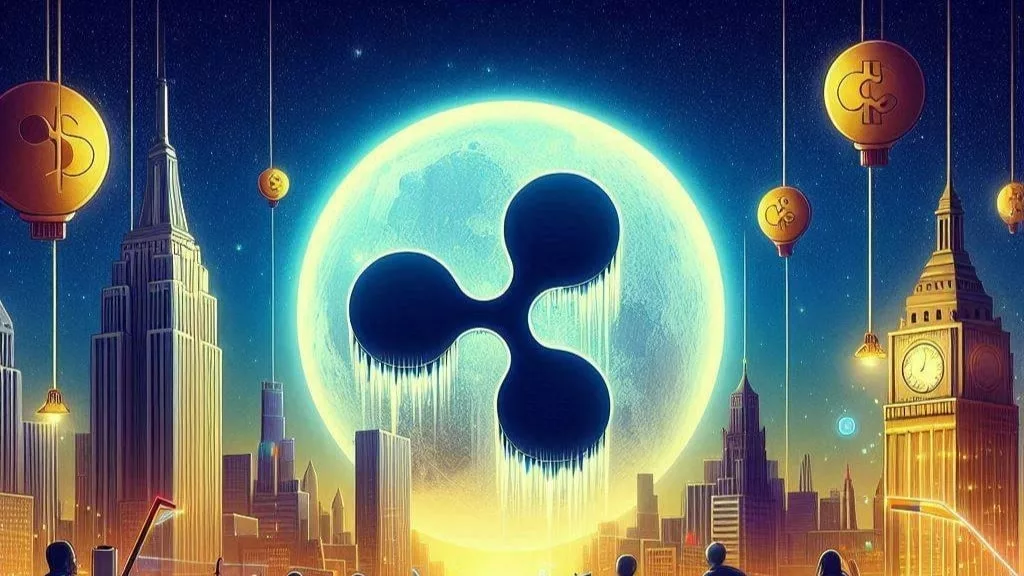
Ripple recently made headlines with an attempted $5 billion acquisition of Circle, the issuer of the USDC stablecoin. However, Circle rejected the offer, reportedly deeming it too low. This move has raised conversations within the crypto industry, especially concerning the potential future of XRP.
According to Bloomberg, the bid, which was valued at around $4 billion to $5 billion, was declined by Circle. While neither party has officially confirmed the offer, sources close to the situation suggest that Circle remains focused on its upcoming Initial Public Offering (IPO). A Circle representative dismissed the acquisition offer as merely a market rumor and stressed that the company’s primary focus is its IPO.
Circle has seen impressive growth in recent months, particularly with its USDC stablecoin, which ranks as the second-largest digital dollar after Tether’s USDT. In 2025 alone, USDC’s market cap surged by 44%, growing from $43 billion to $62 billion in just four months. Meanwhile, Tether’s USDT only saw a modest increase of 7.25% in the same period, rising from $138 billion to $148 billion.
Market analysts have pointed to USDC’s rapid expansion as being tied to its regulatory compliance. Circle has ensured that USDC adheres to strict regulations, including compliance with the EU’s MiCA (Market in Crypto Assets) framework and meeting key requirements of U.S. stablecoin bills, which are still pending. This regulatory approval has boosted USDC’s credibility and adoption, contributing to its strong market growth.
Ripple, on the other hand, has been eyeing ways to expand its presence in the crypto space, and acquiring Circle would have been a strategic move. With the global rise of stablecoins, Ripple could have eliminated a competitor and consolidated its hold on the market. Furthermore, Circle’s regulated status and growing partnerships made it an attractive target for Ripple. Some market observers speculate that Ripple was aiming to control liquidity corridors, on/off ramps, and institutional rails by acquiring Circle, ultimately enhancing XRP’s position in the market.
Crypto investor Varsan Aljarrah expressed a similar view, suggesting that Ripple was strategically locking in key players and infrastructure to strengthen XRP’s dominance. “Bit by bit, they’re locking in all the liquidity corridors, acquiring on/off ramps, and securing institutional rails. All roads lead to #XRP,” Aljarrah said.
However, not everyone is supportive of Ripple’s acquisition attempt. Simon Dedic, CEO of Moonrock Capital, criticized the move, calling Ripple’s strategy “scammy” and questioning why Ripple would want to acquire a legitimate and profitable company like Circle. He argued that Ripple’s attempt to buy Circle was the ultimate example of “fake it till you make it,” accusing the company of taking shortcuts rather than building its credibility organically.
Despite the failed acquisition bid, XRP has experienced notable market momentum. The altcoin saw significant capital inflows, with Glassnode reporting $1.25 billion in capital inflows, which helped XRP recover from its lows in April. This recovery, amounting to a 40% rebound from the $1.6 mark, has placed XRP within a short-term ascending channel, with analysts eyeing $2.4 as a potential target for the altcoin.
However, the future of XRP’s price depends on its ability to maintain key support levels. The $2.1 support is crucial for XRP bulls if the altcoin is to continue its upward momentum. A sustained dip below $2.1 could trigger a decline toward $2 or even lower, posing a risk to its growth trajectory.
In conclusion, while Ripple’s failed bid to acquire Circle may have been a strategic play, it leaves open questions about the company’s future direction and its ambitions in the stablecoin and crypto markets. Whether Ripple will pursue other avenues for growth or continue to focus on expanding XRP’s market share remains to be seen.


Get the latest Crypto & Blockchain News in your inbox.